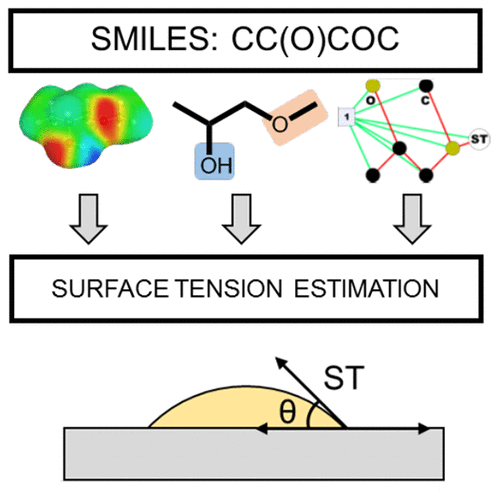当前位置:
X-MOL 学术
›
J. Chem. Inf. Model.
›
论文详情
Our official English website, www.x-mol.net, welcomes your
feedback! (Note: you will need to create a separate account there.)
Predicting the Surface Tension of Liquids: Comparison of Four Modeling Approaches and Application to Cosmetic Oils
Journal of Chemical Information and Modeling ( IF 5.6 ) Pub Date : 2017-11-20 00:00:00 , DOI: 10.1021/acs.jcim.7b00512 Valentin Goussard 1 , François Duprat 2 , Vincent Gerbaud 3 , Jean-Luc Ploix 2 , Gérard Dreyfus 2 , Véronique Nardello-Rataj 1 , Jean-Marie Aubry 1
Journal of Chemical Information and Modeling ( IF 5.6 ) Pub Date : 2017-11-20 00:00:00 , DOI: 10.1021/acs.jcim.7b00512 Valentin Goussard 1 , François Duprat 2 , Vincent Gerbaud 3 , Jean-Luc Ploix 2 , Gérard Dreyfus 2 , Véronique Nardello-Rataj 1 , Jean-Marie Aubry 1
Affiliation

|
The efficiency of four modeling approaches, namely, group contributions, corresponding-states principle, σ-moment-based neural networks, and graph machines, are compared for the estimation of the surface tension (ST) of 269 pure liquid compounds at 25 °C from their molecular structure. This study focuses on liquids containing only carbon, oxygen, hydrogen, or silicon atoms since our purpose is to predict the surface tension of cosmetic oils. Neural network estimations are performed from σ-moment descriptors as defined in the COSMO-RS model, while methods based on group contributions, corresponding-states principle, and graph machines use 2D molecular information (SMILES codes). The graph machine approach provides the best results, estimating the surface tensions of 23 cosmetic oils, such as hemisqualane, isopropyl myristate, or decamethylcyclopentasiloxane (D5), with accuracy better than 1 mN·m–1. A demonstration of the graph machine model using the recent Docker technology is available for download in the Supporting Information.
中文翻译:

预测液体的表面张力:四种建模方法的比较及其在化妆品油中的应用
比较了四种建模方法(组贡献,对应状态原理,基于σ矩的神经网络和图机)的效率,以估算25°C下269种纯液体化合物的表面张力(ST)从它们的分子结构。这项研究的重点是仅包含碳,氧,氢或硅原子的液体,因为我们的目的是预测化妆品油的表面张力。神经网络估计是根据COSMO-RS模型中定义的σ矩描述符执行的,而基于组贡献,对应状态原理和图机的方法则使用2D分子信息(SMILES代码)。绘图机方法可提供最佳结果,可估算23种化妆品油的表面张力,例如半角鲨烷,肉豆蔻酸异丙酯,–1。可在支持信息中下载使用最新Docker技术的图形机器模型的演示。
更新日期:2017-11-20
中文翻译:

预测液体的表面张力:四种建模方法的比较及其在化妆品油中的应用
比较了四种建模方法(组贡献,对应状态原理,基于σ矩的神经网络和图机)的效率,以估算25°C下269种纯液体化合物的表面张力(ST)从它们的分子结构。这项研究的重点是仅包含碳,氧,氢或硅原子的液体,因为我们的目的是预测化妆品油的表面张力。神经网络估计是根据COSMO-RS模型中定义的σ矩描述符执行的,而基于组贡献,对应状态原理和图机的方法则使用2D分子信息(SMILES代码)。绘图机方法可提供最佳结果,可估算23种化妆品油的表面张力,例如半角鲨烷,肉豆蔻酸异丙酯,–1。可在支持信息中下载使用最新Docker技术的图形机器模型的演示。











































 京公网安备 11010802027423号
京公网安备 11010802027423号